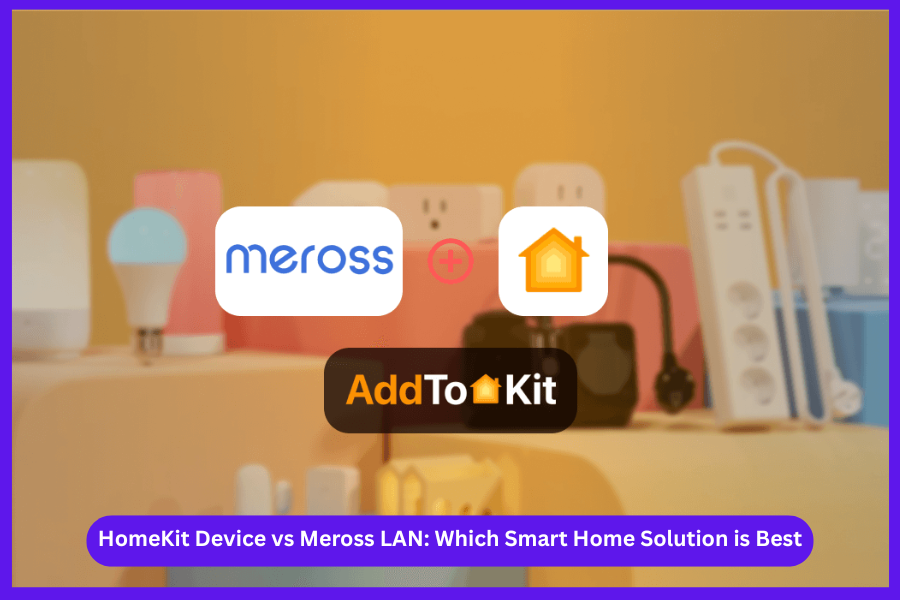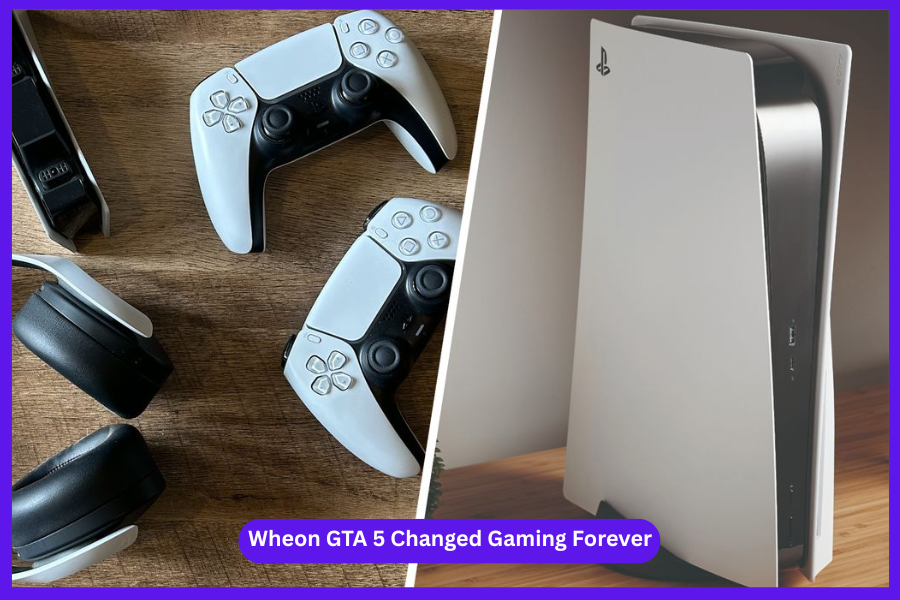In the world of smart homes, HomeKit devices and Meross LAN are two of the most popular options available for automating and controlling your home. Each has its strengths, but deciding which one is best for you depends on your specific needs, preferences, and the ecosystem you’re already invested in. In this detailed comparison, we’ll explore HomeKit and Meross LAN smart home devices, diving into their features, integration options, and how they stack up against each other in the world of smart home automation.
What is HomeKit and How Does It Work?
HomeKit is Apple’s proprietary platform designed to enable the integration of smart home devices into the Apple ecosystem. It works with a variety of smart devices, from lights and plugs to thermostats and security systems. With HomeKit, all compatible devices can be controlled through the Apple Home app or Siri, allowing you to manage everything with a few taps or voice commands.
HomeKit’s Role in Home Automation
Apple’s vision for smart home devices is one where they all work together seamlessly. HomeKit is the backbone that connects your smart devices into a single, unified system. With HomeKit-compatible devices, you can create automations and control them remotely using your Apple devices like the iPhone, iPad, or Mac. For example, you could set your lights to turn off automatically when you leave the house, or have your thermostat adjust the temperature based on your schedule.
HomeKit is particularly attractive for those already within the Apple ecosystem, as it offers tight integration with other Apple devices and services. It allows for voice control through Siri, and offers home automation solutions that work effortlessly across all your Apple gadgets. Whether you’re at home or away, you can easily control all your smart home devices using just your voice or the Apple Home app.
What is Meross LAN and How Does It Work?
Meross is a well-known brand in the smart home industry, offering a variety of smart home devices that focus on Wi-Fi and LAN-based connectivity. Unlike HomeKit devices that rely primarily on wireless protocols like Bluetooth or Wi-Fi, Meross LAN devices connect directly to your home network via a wired Ethernet connection. This means you get more reliable connectivity with less interference, ensuring a stable and consistent smart home experience.
Meross offers a wide range of smart devices, including smart plugs, smart lighting, and smart security cameras, all of which can be easily controlled via the Meross app or integrated with popular smart home ecosystems, including Alexa and Google Assistant. Meross also offers HomeKit integration, allowing you to add their devices to your Apple smart home system if you prefer to stay within the Apple ecosystem.
Comparing the Core Features: HomeKit Device vs Meross LAN
1. Integration with Ecosystems
One of the biggest advantages of HomeKit devices is the tight integration with Apple’s ecosystem. If you already use Apple products, HomeKit can make managing your smart home as simple as using Siri or the Apple Home app. With HomeKit, you can easily create automations, add devices to your smart home ecosystem, and control them remotely from anywhere in the world.
On the other hand, Meross LAN offers a broader range of compatibility with multiple smart home ecosystems. It works with Amazon Alexa, Google Assistant, and of course, HomeKit. If you’re someone who prefers the flexibility of choosing different ecosystems, Meross gives you the option to connect to the platform that best suits your needs.
2. Reliability and Connectivity
When it comes to reliable connectivity, Meross LAN has the upper hand due to its wired Ethernet connection. Unlike wireless connections, which can experience interference or dropouts, a wired connection provides consistent and stable performance. This is particularly important for devices that need to operate 24/7, such as smart security cameras or smart lighting systems.
HomeKit devices, however, rely on Wi-Fi and Bluetooth to communicate with your other devices. While this is generally sufficient for most smart home devices, it can sometimes lead to issues if your Wi-Fi network is unstable or overloaded with too many devices.
3. Ease of Use and Setup
Both HomeKit devices and Meross LAN are easy to set up, but HomeKit devices have the advantage for those already familiar with the Apple Home app and Siri. The setup process for HomeKit devices is intuitive, and since it is natively integrated into your iPhone or iPad, you won’t have to download a separate app to start controlling your devices.
Meross LAN devices, on the other hand, are compatible with both the Meross app and third-party apps like Alexa and Google Assistant. While setting up Meross devices is straightforward, users who are not already familiar with the Meross app may need a little extra time to get everything connected and integrated into their preferred smart home ecosystem.
4. Security and Privacy
HomeKit stands out for its security features. Apple is known for its strong stance on user privacy, and HomeKit is no exception. All HomeKit devices use end-to-end encryption, ensuring that your personal data and smart home activities are protected from prying eyes. Additionally, HomeKit provides regular security updates, which helps to keep your smart devices secure over time.
Meross LAN offers security features as well, but it does not have the same level of built-in privacy and encryption as HomeKit devices. That said, Meross devices are still safe to use and offer cloud storage encryption for devices like smart security cameras, ensuring that your data remains secure in transit.
5. Smart Home Automation and Control
Both HomeKit devices and Meross LAN offer powerful home automation features. With HomeKit, you can create automations that trigger actions based on certain conditions, such as time of day or location. You can also set scenes, such as turning off all your lights when you leave the house or dimming your lights when watching a movie.
Meross LAN devices also support automation and control, but they tend to be more focused on simple, Wi-Fi-based devices like plugs, lighting, and thermostats. While you can create basic automations through the Meross app, it may not have the same level of customization and advanced control as HomeKit.
Which One Should You Choose?
The choice between HomeKit devices and Meross LAN largely depends on your personal preferences and the devices you already have in your home.
- If you’re an Apple user and want the seamless integration of all your smart home devices under one system, HomeKit is the natural choice. Its security, privacy, and ease of use make it a strong contender for anyone looking for a hassle-free smart home experience.
- However, if you’re looking for a more budget-friendly solution with reliable wired connectivity, Meross LAN might be the better option. Meross provides a wide variety of smart devices at affordable prices, making it a great option for those who want to start building a smart home without breaking the bank.
Final Thoughts on HomeKit Device vs Meross LAN
Both HomeKit and Meross LAN offer unique advantages for those interested in smart home automation. HomeKit excels in privacy, security, and integration with Apple products, while Meross LAN focuses on reliable connectivity, affordability, and compatibility with multiple smart home ecosystems.
Ultimately, your decision should depend on the specific needs of your smart home, the devices you already use, and your budget. Whether you’re looking for a wireless smart home solution with tight integration or a more cost-effective wired option, both HomeKit and Meross offer powerful home automation solutions that can help make your home smarter, more efficient, and more secure.
Conclusion: HomeKit Device vs Meross LAN – Which is Right for You?
In the battle of HomeKit Device vs Meross LAN, both options offer compelling reasons to choose them for your smart home setup. HomeKit shines with its seamless integration into the Apple ecosystem, strong privacy features, and reliable automation options for users already invested in Apple devices. It’s ideal for those looking for ease of use, top-notch security, and comprehensive smart home control through Apple’s apps and Siri.
On the other hand, Meross LAN stands out with its affordable pricing, reliable wired connectivity, and broad compatibility with multiple smart ecosystems, including Alexa and Google Assistant. It’s a great option for those who prioritize stability in their devices and want to avoid the potential interference issues that can occur with wireless-only connections. Meross LAN is also perfect for users on a budget who want to expand their smart home with reliable devices without being locked into a single ecosystem.
Ultimately, the right choice comes down to your personal preferences, the smart home ecosystem you’re most comfortable with, and your specific needs. Whether you choose HomeKit for its Apple-centric integration or Meross LAN for its flexibility and stability, both options will enhance your home’s automation and convenience.
FAQs: HomeKit Device vs Meross LAN
1. What is the main difference between HomeKit devices and Meross LAN?
The key difference lies in the integration and connectivity options. HomeKit devices are specifically designed to work within the Apple ecosystem, offering seamless integration with iPhones, iPads, and Siri. Meross LAN devices, however, are known for their wired Ethernet connection, ensuring more reliable performance and compatibility with multiple smart ecosystems like Amazon Alexa and Google Assistant.
2. Is Meross LAN better than HomeKit?
Not necessarily. Meross LAN offers stable, wired connections and broader ecosystem compatibility, which is great for users looking for reliable performance and flexibility at a lower cost. HomeKit, however, excels in privacy, security, and Apple ecosystem integration. It depends on whether you prefer an Apple-focused experience or a more open, budget-friendly solution.
3. Can I use Meross devices with Apple HomeKit?
Yes! Meross devices are compatible with Apple HomeKit, so if you prefer the Apple ecosystem, you can integrate Meross LAN devices into your HomeKit setup and control them through the Apple Home app or Siri.
4. Which option is better for home security, HomeKit or Meross LAN?
Both offer solid home security features, but HomeKit has the edge in terms of privacy and encryption, as it ensures all your data is protected with end-to-end encryption. Meross LAN offers reliable performance, especially for security cameras, but it doesn’t have the same level of built-in encryption as HomeKit.
5. Can I control both HomeKit and Meross devices with a single app?
Yes, you can control Meross devices via the Meross app and integrate them into the HomeKit ecosystem for unified control with the Apple Home app. However, if you’re using other smart assistants like Alexa or Google Assistant, you might need their respective apps for non-HomeKit devices.
6. Are HomeKit devices more expensive than Meross LAN devices?
Generally, HomeKit devices tend to be priced higher due to their premium features, integration with Apple products, and enhanced security measures. Meross LAN devices, on the other hand, offer more affordable options, making them a great choice for budget-conscious users looking for smart home devices with stable performance.










